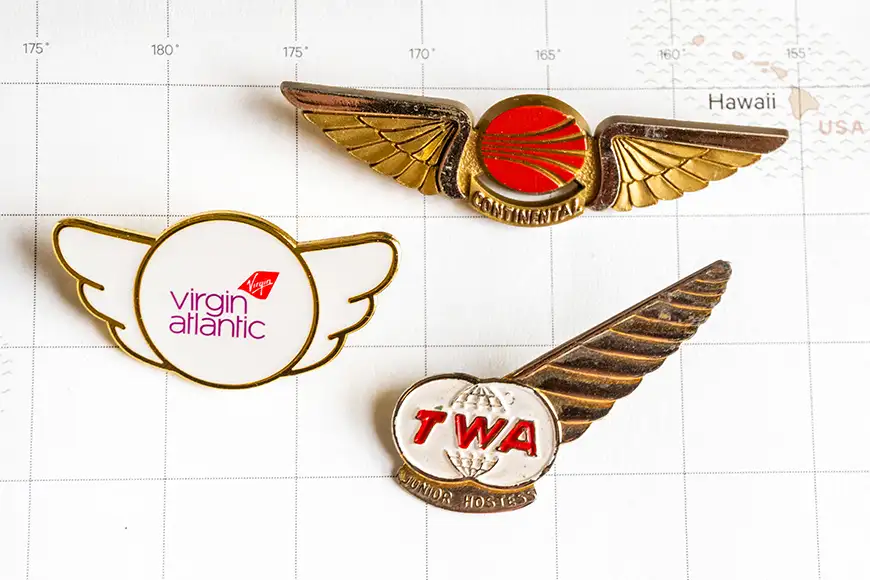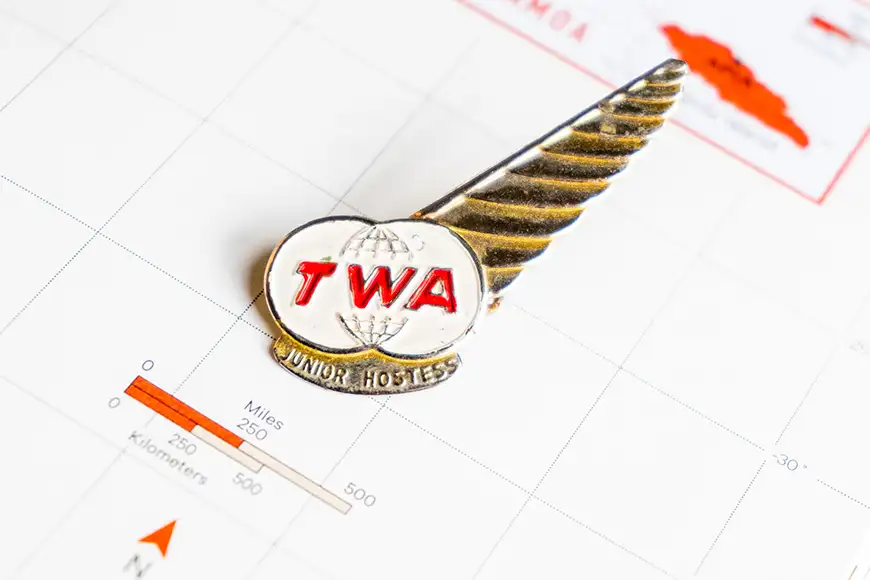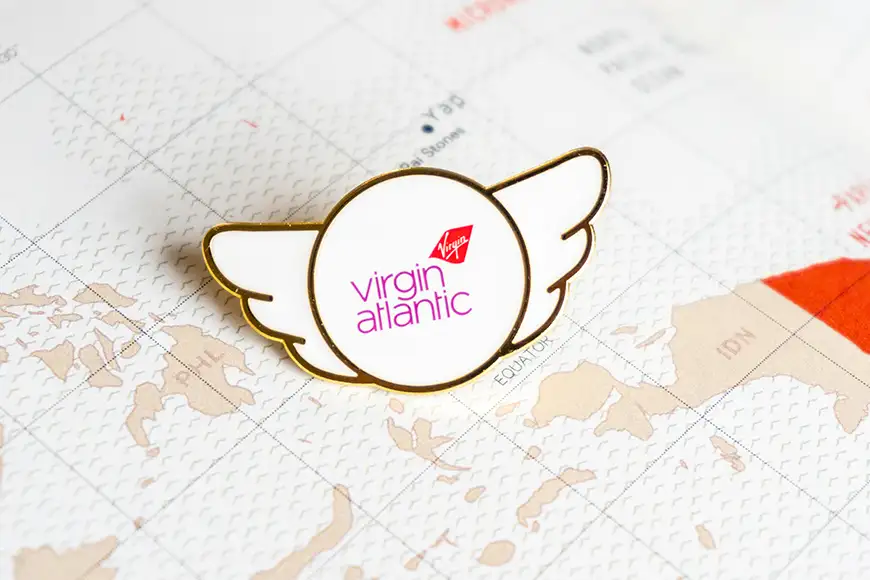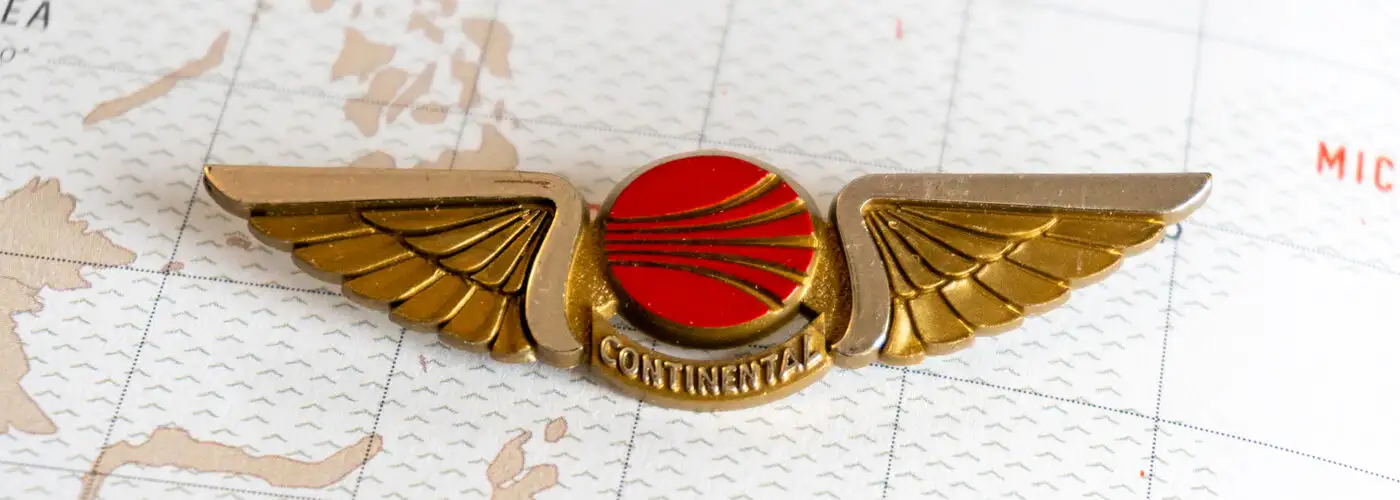How one mini freebie illustrates the story of the airline industry at large.
As a kid, I loved to rummage around the bottom of my father’s sock drawer, where, among the loose change and rolls of breath mints, he stashed his collection of little airplane wing pins. For decades, these were handed out as mementos to child passengers, but my business-traveler dad (ever a 10-year-old at heart) was never above grabbing one for himself. I found his collection of pins compelling then, and today they still fascinate me. In many ways, wing pins have been a weathervane of the airline industry, showing what direction the winds of change are blowing.
Aficionados can often recall their first pin. Tracy Stewart, Managing Editor of Airfarewatchdog (SmarterTravel’s sister site), remembers the exact brand. “It was given to me by my dad. He gave me a Delta pin, and I thought that was the coolest thing.”
Likewise, Cameron Fleming, advertising copywriter and creator of the site Fly the Branded Skies, recalls his modest collection as a kid. “I would keep them in a jam jar. I had maybe 12.” As an adult, he now owns 636 pins, which are stored in an industrial filing cabinet and documented methodically on his site. Fleming is in good company. More than 1,300 eBay listings are currently selling junior wings, ranging from a plastic Western Airlines pin going for $2 to a 1940s United Airlines one for $125.

Wing pins and commercial flight took off in tandem. As early as the 1930s, airlines gave out tiny metal airplane-wing pins to their youngest travelers—usually kids flying for the first time. In those days, these tiddlywink-type handouts were a huge badge of honor; only about one percent of Americans in the 1930s had boarded a commercial flight, and very few were children. “The Civil Aeronautics Board always had the final say in how much airlines could set seat prices,” Stewart says, “and you didn’t see a lot of discounted fares or even youth fares.”
In that era, air travel and the accompanying souvenir would have been quite exotic. “Having that Pan American ‘junior pilots’ pin on the playground would be quite something,” Fleming says. In terms of bragging rights, “it would be like you went to the moon.”
These wings became treasured keepsakes for kids, like baseball cards or marbles, and they fostered similar attachments. Some pins were marked “pilot,” “crew,” or “stewardess,” allowing children to role-play and recreate their flights during play-time. In those days many airlines doled out pilot pins to boys and stewardess ones to girls, proving that even 30,000 feet in the air, there’s still a glass ceiling.
Production of these “junior wings” or “kiddie wings” continued through the decades and peaked in the 1980s. Those years were also a boom time for air travel; propelled by the industry’s deregulation in 1978, the number of passengers doubled to 1 billion in the decade from 1975 to 1985. “Finally, airlines were able to set their own fares and they could be more competitive,” Stewart says. And with rising competition came the drive for airlines to set themselves apart. It’s in this moment “you start seeing airlines giving out lots of freebies like wing pins.”
Fleming also notes that wing pins were a way for new-to-market brands to legitimize themselves, essentially acting like wearable business cards. “It was a marketing symbol that the airline was open for business. Once it had the wings that it could give out to kids, it had arrived.” It also helped that new, cheapie plastic versions of these pins made significantly less of an impact on the bottom line than the costlier metal ones. At the high point, 73 airlines were doling out wings to their youngest clientele.

Of course, these were just part of a fleet of airline-branded items that included playing cards, matchbooks, and keychains. But kiddie pins were singular in that they targeted the next generation of travelers, which put them in an ethical gray zone. A 1978 report by the Federal Trade Commission, the same year as airline deregulation, confirmed that children under age 8 couldn’t differentiate between an advertisement and a personal message. This meant that children saw the pins as toys gifted to them, no different from a faux sheriff badge or secret decoder ring. As such, the pins fostered nostalgia as powerful as any other childhood plaything, but specific to an airline. This was not unlike the branded toys from McDonald’s Happy Meals, which kicked off in 1979. That pairing has met it share of criticism for using Disney characters, Beanie Babies, and the like to entice kids into a lifelong relationship with unhealthy food.
Fleming, however, doesn’t see pins as a “nefarious” act on the airlines part to hook the next generation. “I guess depending where you were in your development, it could mean a lot to you as a kid, and some of those residual feelings would carry on into adulthood.” But ultimately, he sees the pins as an excuse for playtime in a less-than-playful space. Stewart also thinks “it’s just a way of putting kids at ease,” and compares wing pins to a free lollipop at the bank. “For kids, it’s an act that helps soften up an otherwise boring, adult necessity,” he says.
Wherever they fall on a moral spectrum, wing pins have taken a nosedive since their heyday in the 1980s. The early 2000s was a low-point for pins; only around four airlines continued to dole them out. Once again, the pins reflected the larger turbulence in the marketplace. “In 2000, the industry was dealing with a bad economy—nine airlines went bankrupt—and then 9/11 happened and everything went down the tubes,” Stewart says. “After that, you start seeing successful budget carriers springing up. Legacy carriers were forced to mimic the model used by the low-cost carriers to survive.”
The rise of online flight shopping and easy price comparison tools drove a race to rock-bottom prices. With more and more price transparency, airlines couldn’t rely on emotional connections forged by kiddie wings and other paraphernalia to help sell tickets. Nor could they justify raising the price to absorb the cost of those branded items, when even a $10 difference could send travelers to the next airline on search results.
The heyday of wing pins was officially over.
Or was it? In the 2010s, airlines have again risen in profitability, and the wing pin has started to make a few glimmering reappearances. “Delta has them. United has them. American has them,” Fleming says, listing the wing pins that could be currently circulating somewhere above our heads. Delta, Fleming recalls, brought its pins back with a lot of fanfare. “They are so strongly associated with the golden era of air travel that bringing them back really does send a strong signal of company health,” he explains.

Tellingly in these last few years, pins have popped up outside fuselage walls. On a flight back from London, I ran into a familiar sight: the wing pin. This time, it was being handed out in the airport terminal by a Virgin Atlantic rep next to a “selfie wall.” The pin, on a millennial-pink card, declared, “You’re a future flyer” and came with a postcard instructing travelers to snap a picture and post it with the hashtag #VirginFutureFlyers.
In a way, that’s a return to form for the wing pin. “What’s interesting about them is that they’re an invitation to participate in the brand,” Fleming says. “The idea that you can, on some basic level, be part of the crew is exciting.” Just like in yesteryear, these new wing pins are encouraging interaction, playtime, and “joining a crew,” though now all of that takes place in a virtual world.
It’s not surprising that, in our last decade, wing pins have left the current dreariness of the plane cabin and slipped down the escape ramp of social media. In the past, Stewart jokes, “You’d have a huge hulking seat, like a La-Z-Boy, and the flight attendant would be, say, carving a ham next to you.” Now he says, “the reality is that you’re trapped in a plane with very little legroom.” In other words, in the middle seat of economy, everyone’s wings are clipped. But online, the fantasy of jetting off into the sunset still lives on. And it’s on that runway that airline pins could take off again.
More from SmarterTravel:
- 7 Air Travel Secrets You Didn’t Know
- Flight Attendants Reveal Their Secrets for a Better Flight
- The 5 Rules of Reclining Your Airplane Seat
We hand-pick everything we recommend and select items through testing and reviews. Some products are sent to us free of charge with no incentive to offer a favorable review. We offer our unbiased opinions and do not accept compensation to review products. All items are in stock and prices are accurate at the time of publication. If you buy something through our links, we may earn a commission.
Related
Top Fares From
Today's Top Travel Deals
Brought to you by ShermansTravel
France: 8-Night Paris, Avignon & Nice...
Infinity Worldwide Vacations
 vacation
$2880+
vacation
$2880+
Poconos: 3 Nts in Garden of...
ResortsAndLodges.com
 hotel
$305+
hotel
$305+
7-Nt Canada & New England Cruise,...
Princess Cruises
 cruise
$839+
cruise
$839+




